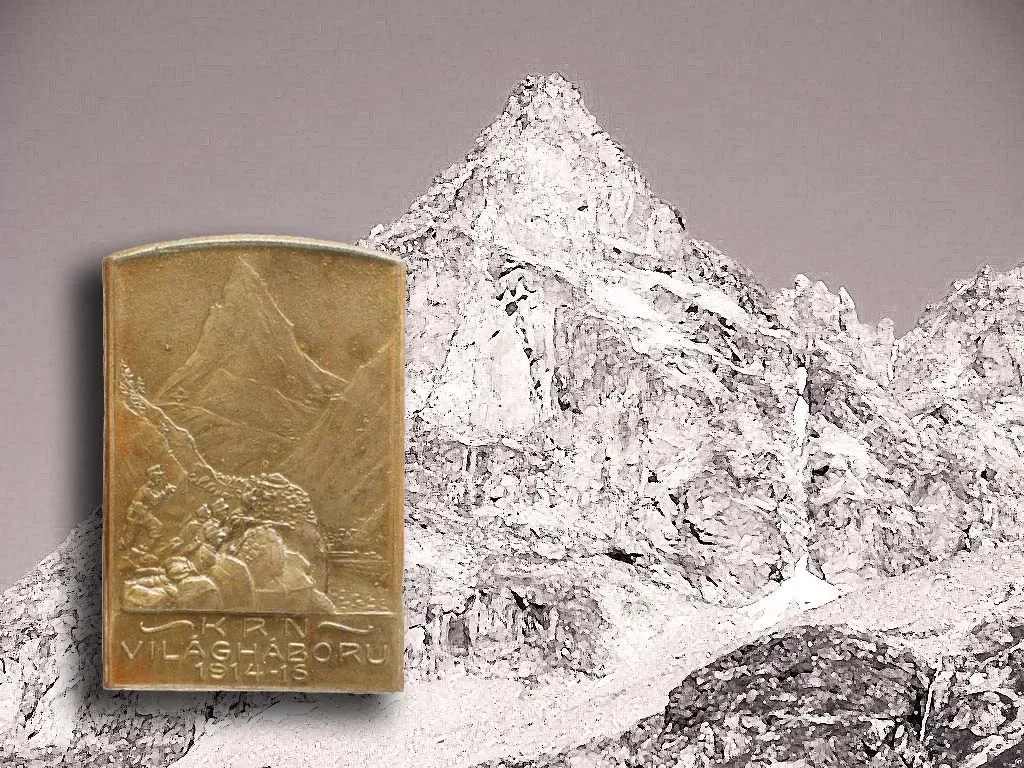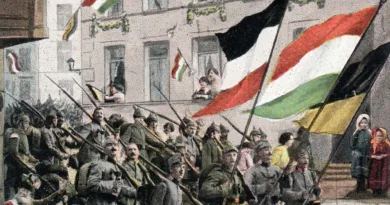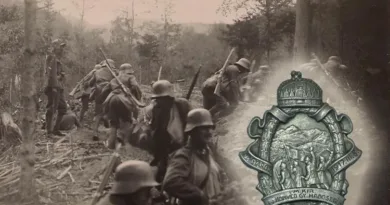Krn
It’s a strange name made up of all consonants. Of course, this congestion is not uncommon in South Slavic languages, and it is especially common in Slovenian. Trieste is also called Trst in Slovenia. But it doesn’t have to bother anyone. Krn is a mountain. Its Italian name is Monte Nero, the same as the Slovenian, i.e. Black Mountain. 2244 meters high, one of the peaks of the Julian Alps, in the upper valley of the Isonzo, east of it. On the west side, towards the river, it breaks steeply towards Caporetto (Kobarid).
In the Great War, the front line stretched along the peaks and passes on the east coast of Isonzo. The exception was the Austro-Hungarian bridgehead at Tolmein. Retaining the bridgehead also depended on whether the nearby mountains could be controlled. Therefore, between 1915 and 1917, the Monarchy and Italy fought bloody battles for the mountains Krn, Sleme, Vodil Vrh and Mrzli Vrh.
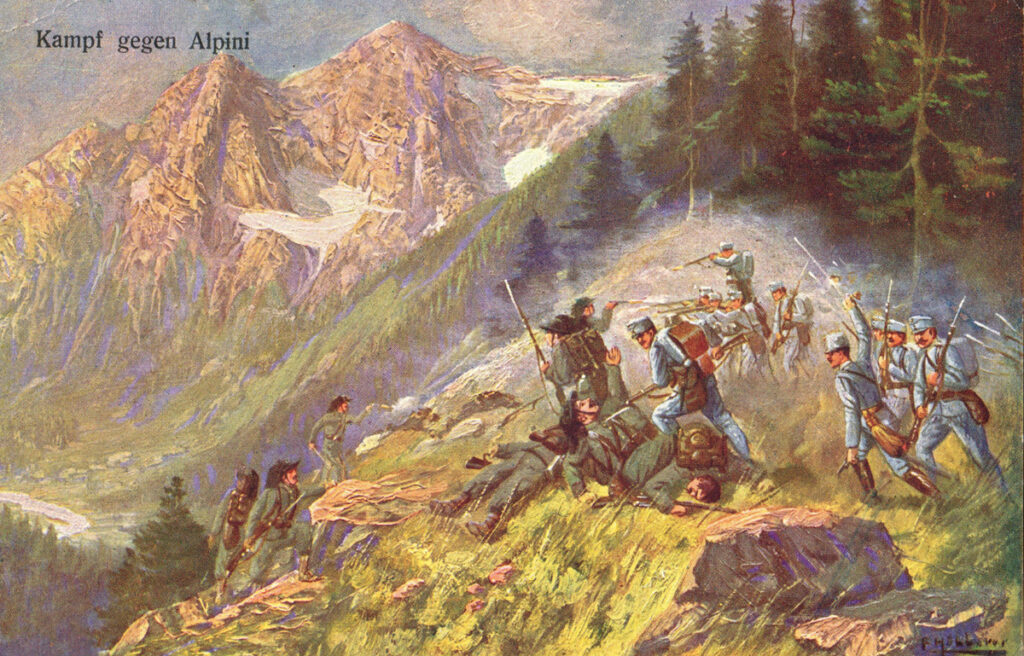
One of the most remarkably successful episodes of this struggle from an Italian point of view took place on June 16, 1915, shortly after the Italian entry into the war. At dawn on this day, the 3rd Alpine Regiment occupied the Krn Peak with a bold venture. The alpini climbed the mountain from the west, on the steep side. The covert, silent attack surprised the II. battalion of the 4th Honvéd Infantry Regiment stationed at the summit. The entire battalion was taken POW after a brief fight. It was the first and one of the greatest successes of the Italian army during the Great War. One of the reasons for the failure was the recruitment of the VII. corps In the Hungarian Plains as they proved to be totally inexperienced in mountain warfare. The corps was then soon transferred to the Karst south of the front during the summer. It was replaced by mountain brigades transferred from the Serbian front, which were able to defend themselves more successfully even in the high mountains.
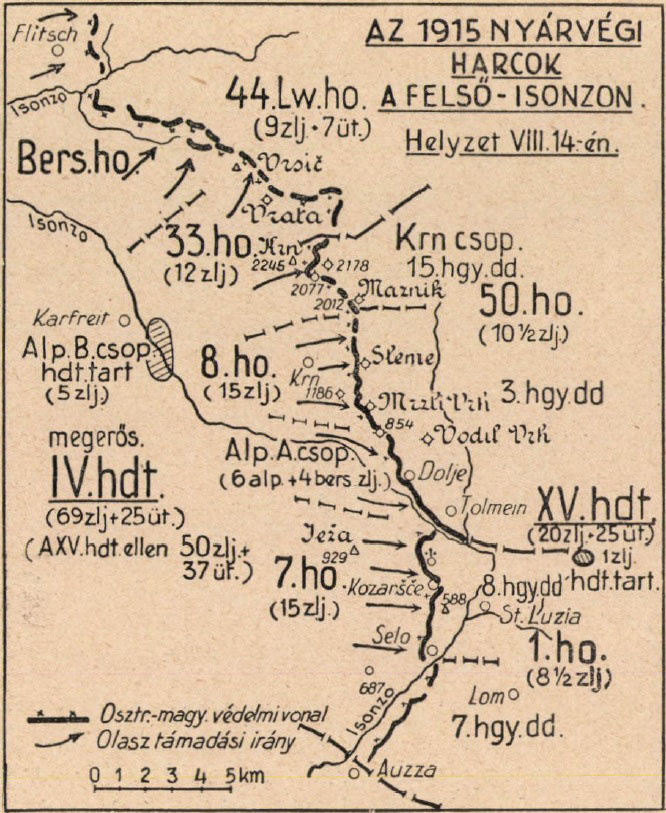
Later, the struggle continued for the possession of the ridge of the mountain range around Krn. The Italian attacks sought to gain possession of the ridge over a wider stretch. There were also desperate fighting in the area of Mrzli Vrh and Vodil Vrh peaks and in the Sleme pass area under extremely difficult conditions. In the 2nd and 3rd battles of Isonzo, in August 1915, the 3rd and 15th mountain brigades defending here managed to hold their positions, but the recapture of the Krn peak exceeded their strength. From November onwards, due to the oncoming winter weather, there were no major troop movements on this front section. In 1916, the main targets of the Italian attacks were the Görz bridgehead and the Karst, where they managed to get results during August: the Görz bridgehead had to be abandoned. Operations in the area revived in the fall of 1917. The 12th Isonzo Battle was the time of the Caporetto breakthrough. It was then that the struggle with the many victims for possession of the heights that dominated the Tolmein bridgehead paid back. It was from this bridgehead that the great offensive operation of the Central Powers began.
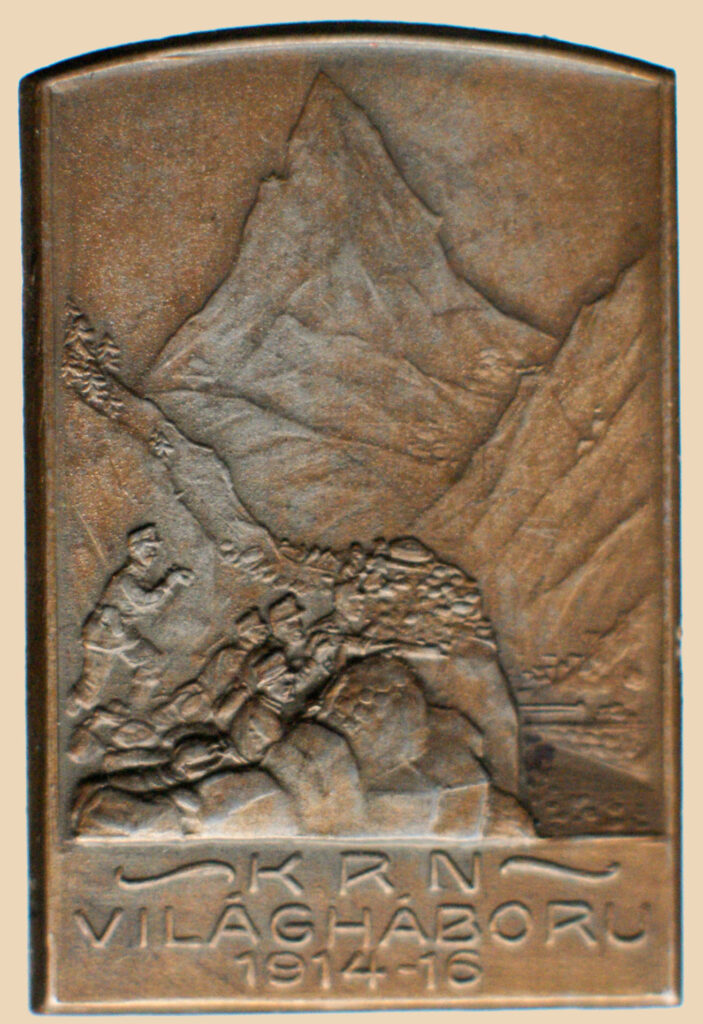
The troops employed to defend Krn must have liked to wear the ARKANZAS badge decorated with a panorama of the mountain. I tried to find the panorama that the badge shows in today’s photos. Of course, it is not certain that the image of the badge is lifelike, because the peak is only visible from the side of the mountain at such a sharp angle, not from the river bank. In addition, the posts near the mountain were not on the river bank, so the depiction of the badge is certainly not lifelike. But in the end, it almost doesn’t matter.

